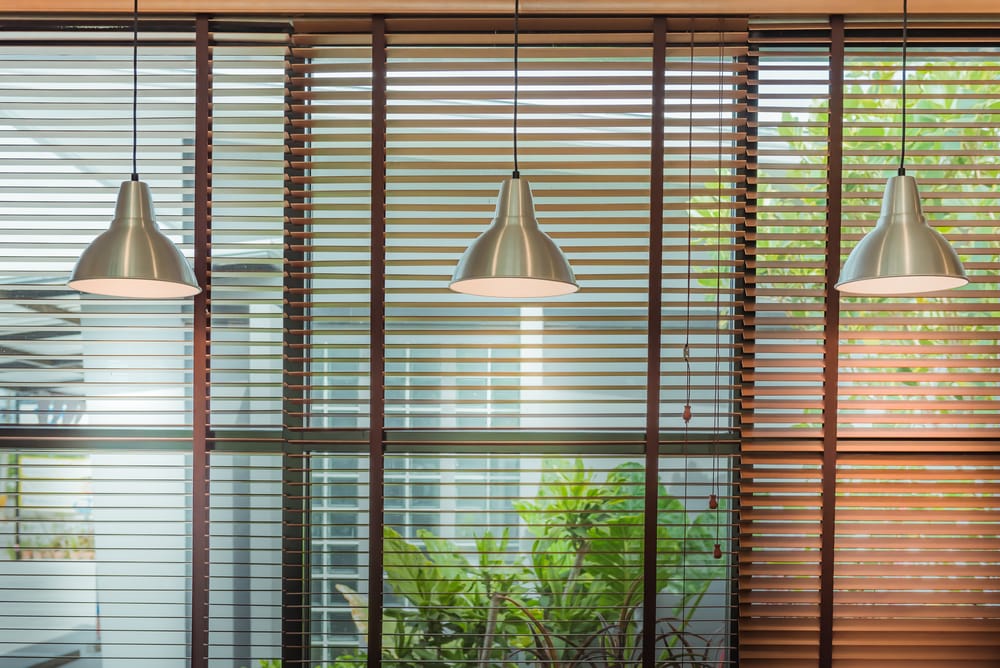How to remove venetian blinds
What's on this Page?
Open and lift the blind upUnlock brackets to free the blindsFree the blind from the opposite bracketWhat are the different types of venetian blinds?Are horizontal or vertical blinds better?Are Venetian blinds and horizontal blinds the same?
20 March 2023 · Last updated on 20 March 2023
A deep clean of your Venetian blinds will make your home look amazing - if you can get them down first. Venetian blinds are window coverings made of slats that are horizontally placed. They date back to the 16th century and are still favourites in the market for many home owners. These blinds are suitable for light regulation through cord control and enhance privacy and the beauty of the house. At some point though, these blinds may need to be removed and below are some handy steps to follow.
Open and lift the blind up
Open the blind slats into their horizontal position then pull them up to the top of the window. Ensure you remove anything that may get in the way while you pull the blind to avoid causing any damage.
Unlock brackets to free the blinds
Release one bracket first while holding the bottom of the blinds with a single hand and unhook the blind from the bracket using the other hand. Apply some pressure on the brackets and while twisting them downwards for faster removal of the blinds.
Free the blind from the opposite bracket
Free the blind from the opposite bracket using the same process. Cautiously pull the blind away from the window and place them in a safe spot to avoid causing damage.
What are the different types of venetian blinds?
Window blinds come in many different types - from horizontal, vertical, roman, to roller blinds. Of all these types, Venetian blinds are the most common in Australia. These blinds have horizontally placed slats that hold on to a head rail. Some of the common Venetian blinds are made from aluminium, timber and PVC - all of which can either be normal or spring-loaded. They are often very easy to customise to your home, both in width and length. Here's a simple way to shorten your own Venetian blinds at home.
Aluminium blinds
Aluminium blinds give an elegant appearance to home windows. The aluminium used ensures the durability of the blind. They are also lightweight and fireproof.
Timber blinds
Timber blinds are more expensive compared to aluminium blinds because of the high cost of the material used. Timber blinds can be customised into different colours and they can also have different finishes.
PVC blinds
PVC blinds are water-resistant and they are commonly used in bathrooms. They are made in a way that they can withstand steam and extreme heat without any damage. This is the most affordable type of blind compared to aluminium and timber blind.
Are horizontal or vertical blinds better?
Deciding on a suitable blind between vertical and horizontal blind can be challenging. However, understanding their merits and demerits can in a way help make things easier. Any blind, be it roller blind or horizontal blind, should be able to add to the appearance of a room, give privacy and allow the desired amount of light in. Often, blinds are an ideal solution for those who don't like shutters. If you want blinds for big windows or double doors, then a vertical blind is the most suitable option. In case you have a narrow and small-sized door and window, a horizontal blind will be a better solution. Vertical blinds come with bigger slats that require more space and create a feeling of a taller room. Horizontal ones are flexible and can be customised to fit the available space. Vertical blinds bring in a lot of light and can be adjusted easily. Horizontal blinds also allow light as desired and they can be customised to provide a variety of options for your room lighting. For privacy, a vertical blind will be suitable without blocking all light. . Vertical blinds are easier to clean. This is because its design prevents dust from settling on the slats and therefore they can be cleaned by simple wiping. Horizontal blinds involve more hygienic cleaning as the position of the slats allows the accumulation of more dust.
Are Venetian blinds and horizontal blinds the same?
Venetian blinds are also called horizontal blinds. They have slats that are horizontally positioned and are held at the headrail of the window. The slats are joined by a string and a control cord. You can place them in windows or doors to also serve as curtains, homeowners often are faced with a challenging decision to choose blinds or curtains. Both have their merits and can be easily removed when there's a need.








